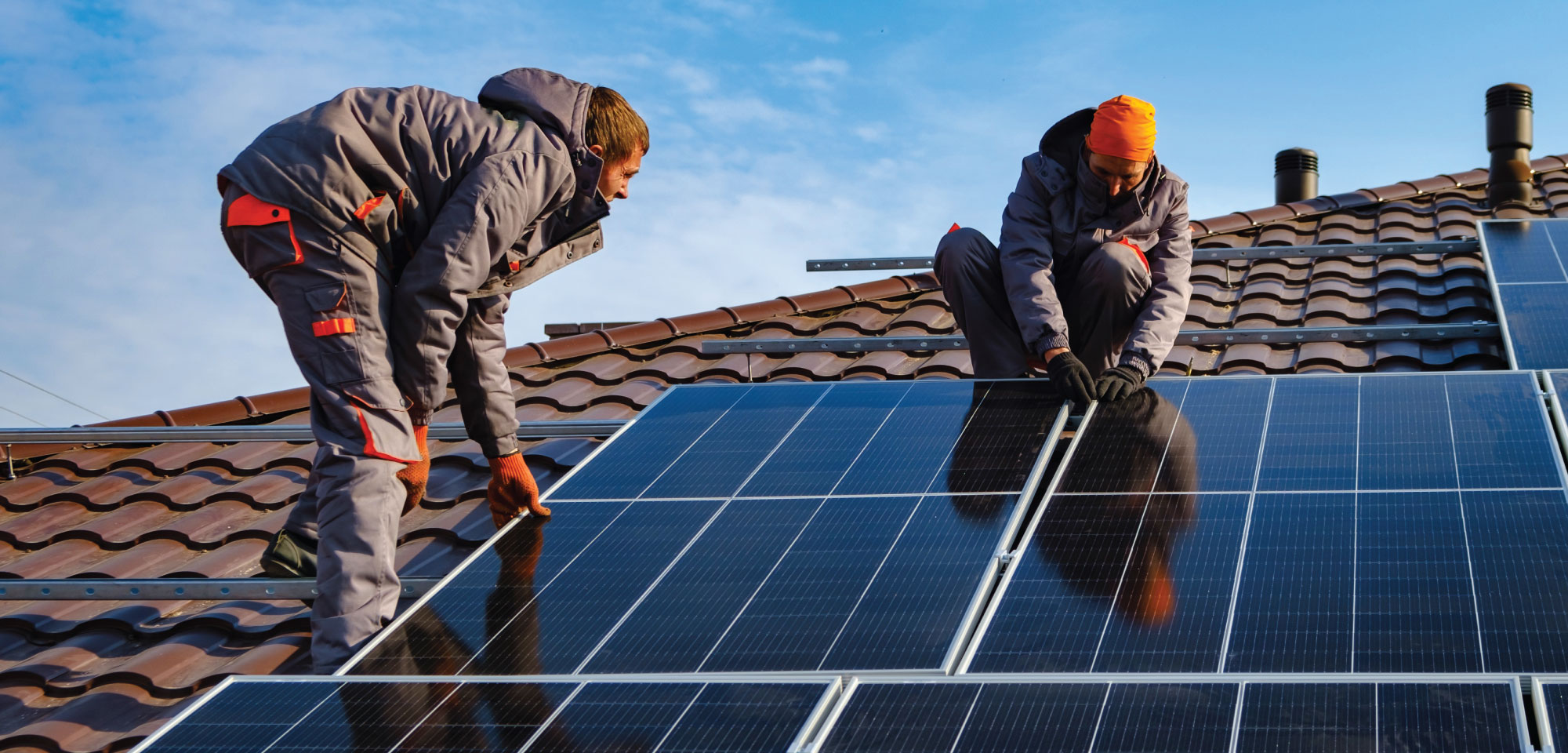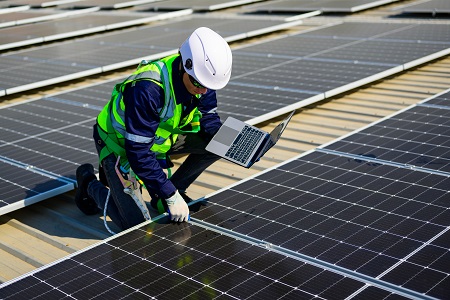The Best Strategy To Use For Best Solar Panel Company Virginia
The Best Strategy To Use For Best Solar Panel Company Virginia
Blog Article
Virginia Solar Panel Leasing: Lumina Solar Focuses On Supplying Advanced Photovoltaic Solutions For Homes And Services
History and Founding
Have you ever questioned how a photovoltaic panel company springs from a simple stimulate of inspiration into a powerhouse of sustainable energy? It often begins with a vision-- one fueled by a blend of development, decision, and a pinch of serendipity. The journey of many solar companies mirrors the advancement of the innovation itself: from bulky, inefficient panels to smooth, high-efficiency marvels harnessing the sun's bounty.
The Early Days
In the late 20th century, when solar energy was still a niche idea, leaders planted seeds for what would become an international motion. Picture a little workshop filled with curious engineers, tirelessly explore photovoltaic cells. Their passion was palpable, frequently driven by a desire to fight climate change and minimize dependence on fossil fuels.
One such anecdote has to do with a creator who, motivated by an outdoor camping trip, realized that even in remote locations, the sun could power necessary devices. This easy observation sparked a company's objective to democratize access to tidy energy.
Establishing Concepts

- Development: Constantly pressing the boundaries of solar technology to improve performance and sturdiness.
- Sustainability: Devoting to environmentally friendly production and lowering carbon footprints.
- Availability: Making renewable resource options budget friendly and practical for everyday users.
Turning points in Growth
| Year | Key Occasion |
|---|---|
| 1985 | Company founded in a small garage, focusing on research and development. |
| 1995 | First industrial photovoltaic panel product introduced, getting local attention. |
| 2005 | Expanded to international markets, accepting global eco-friendly energy goals. |
| 2015 | Presented innovative solar panel technology with boosted energy conversion. |
Isn't it interesting how these incremental actions, typically ignored, form the energy landscape today? The photovoltaic panel business story is not just about innovation; it has to do with an unrelenting mission for a brighter, cleaner future.

Developments in Solar Panel Technologies
Ever discovered how some photovoltaic panels gleam brighter and last longer? It's not magic; it's the science of photovoltaic effectiveness. Modern photovoltaic panel business invest heavily in innovations like bifacial cells, which capture sunshine from both sides, enhancing energy harvest without broadening roofing space. Have you ever wondered why some panels carry out much better on cloudy days? That is because of advances in thin-film solar innovation, which thrives under diffused light conditions.
Item Variations Tailored to Unique Needs
One size never fits all. Photovoltaic panel providers now use:
- Monocrystalline panels for maximum performance and sleek aesthetic appeals, perfect for space-constrained rooftops.
- Polycrystalline panels, which provide a cost-effective alternative without compromising too much output.
- Building-integrated photovoltaics (BIPV), combining solar tech perfectly into architectural aspects like windows and facades.
Choosing the best product isn't practically in advance cost; it has to do with matching your environment, energy objectives, and long-lasting savings. For instance, homes shaded by trees require panels that stand out in low-light scenarios, something many overlook till energy costs climb up suddenly.
Technical Tips for Ideal Choice
- Assess the temperature level coefficient-- lower worths suggest panels lose less performance on hot days.
- Search for panels with enhanced anti-reflective finishes to maximize light absorption.
- Think about the panel's warranty not simply for flaws, but for ensured power output over years.
- Don't ignore the value of the inverter innovation combined with the panels; it can make or break your system's performance.
Beyond Panels: Emerging Trends
Think of photovoltaic panels that adjust their angle instantly to chase after the sun-- tracking systems are ending up being more accessible, increasing yield considerably. Or solar tiles that mix invisibly into your roofline, transforming your home into a quiet, self-sufficient power generator. These developments are reshaping what a solar panel business provides-- not just items, but integrated energy services.
Market Presence and Global Operations
Ever question why some photovoltaic panel companies seem to sprout up in every corner here of the world while others barely make a ripple? The difference lies not simply in technology but in mastering the art of navigating diverse markets. Expanding globally is like planting seeds in different climates-- you should comprehend each environment's distinct conditions to prosper.
Take, for circumstances, the complex dance of logistics and supply chain management. Delivering panels halfway across the world isn't simply about distance; it's about timing, customs, tariffs, and adjusting to local need changes. A business with robust global operations anticipates these variables, ensuring panels arrive on schedule without pumping up costs. This insight is no small feat and frequently separates market leaders from followers.
Key Methods for Expanding Market Existence
- Localized manufacturing: Establishing production centers near target markets reduces shipping delays and import intricacies.
- Strategic collaborations: Working together with regional firms speeds up market penetration and constructs trust.
- Adaptive product design: Tailoring photovoltaic panel tech to weather, sun intensity, and infrastructure subtleties improves performance and acceptance.
What about the human element? Solar panel business operating globally need to fix up cultural differences and regulatory nuances without losing sight of their core mission. For example, what operate in a sun-drenched desert may falter in a humid seaside region. Sometimes, the most ingenious solution is simply listening-- soaking up regional insights to refine technology and approach.
Specialists typically encourage a phased rollout rather than a shotgun growth. Why run the risk of overextension when determined development builds sustainable momentum? Scaling sensibly implies balancing aspiration with operational strength - Solar Panel Installation Virginia. After all, in the race for sustainable energy supremacy, persistence can be as important as speed
Ecological Impact and Sustainability Practices
When photovoltaic panels initially emerged, lots of assumed they brought absolutely no environmental baggage. However, the reality is more nuanced. The production of photovoltaic cells includes uncommon earth metals and energy-intensive procedures, which can leave a large carbon footprint before the panels even reach rooftops. The true environmental expense depends greatly on the sustainability practices used by the solar panel business throughout the lifecycle of their items.
How typically do we pause to consider what happens to photovoltaic panels at the end of their beneficial life? Unlike batteries or electronic devices, solar panels can last 25-30 years, but disposal and recycling paths remain underdeveloped in many regions. A business devoted to minimizing ecological harm will have a robust strategy for recycling photovoltaic materials, restoring valuable silicon, glass, and metals to avoid land fill accumulation.
Key Sustainability Strategies
- Utilizing low-impact production strategies that minimize water and energy usage.
- Implementing closed-loop systems to recycle production waste back into new panels.
- Engaging in transparent supply chain audits to guarantee ethical sourcing of basic materials.
- Creating panels for easier disassembly to help future recycling efforts.
It's worth keeping in mind that some solar business have actually pioneered innovative methods, such as incorporating biodegradable elements or using less toxic chemicals during fabrication. This not only lowers environmental pressure but likewise sets a precedent for the market. The concern stays: can the solar industry genuinely pivot towards a circular economy design without compromising effectiveness or cost?
Professional Tips for Examining Sustainability
- Inquire about the business's commitment to carbon-neutral production and whether they balance out emissions.
- Investigate if they partner with certified recycling facilities dedicated to solar panel waste.
- Look for transparency reports detailing ecological impacts and sustainability objectives.
- Think about the longevity and warranty of panels as an indirect measure of resource effectiveness.
In the end, choosing for solar energy needs to mean more than just slashing electrical energy expenses; it has to do with supporting a future where energy is harvested properly and waste is thoughtfully handled. Photovoltaic panel business that accept this approach not only brighten homes however likewise cast a brighter light on sustainable innovation.
Report this page